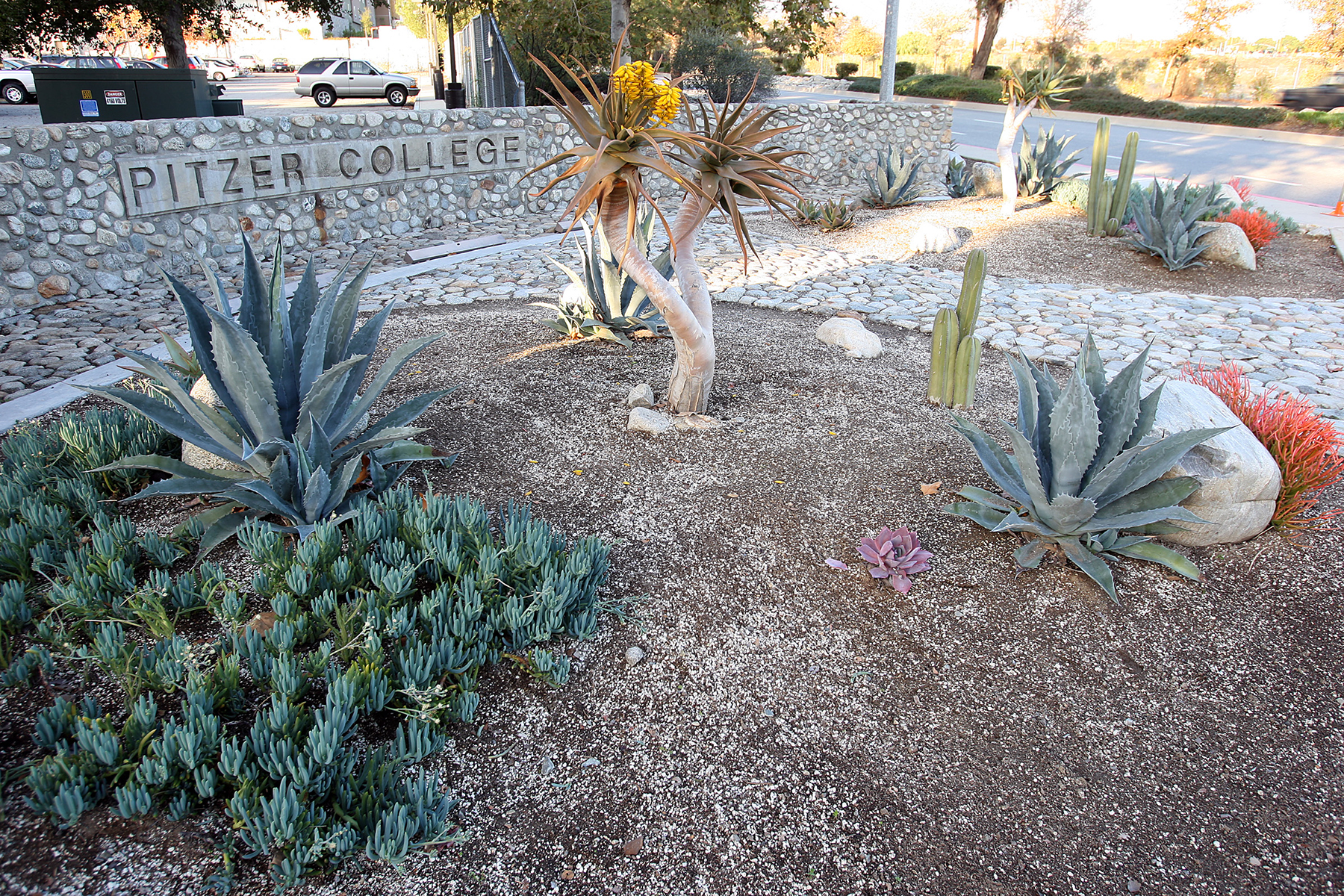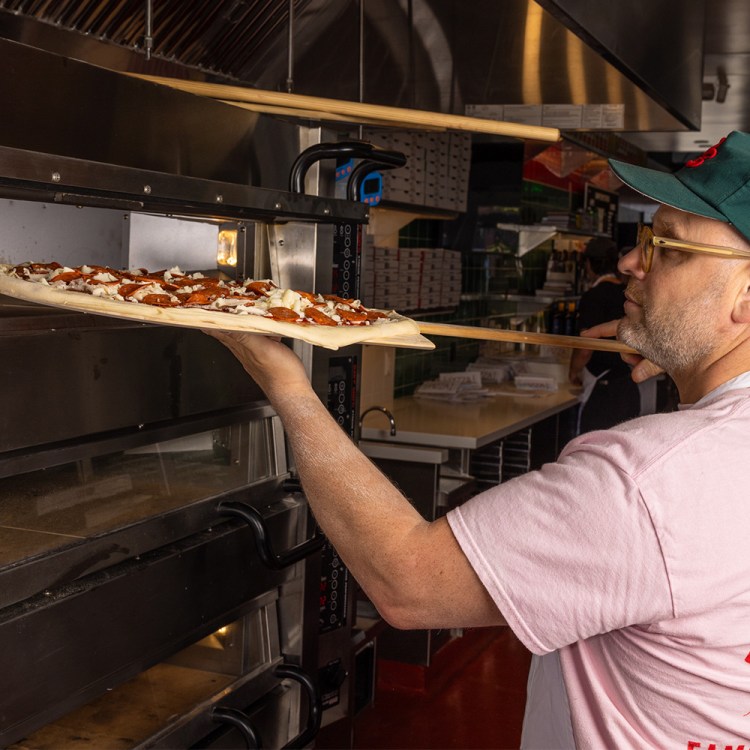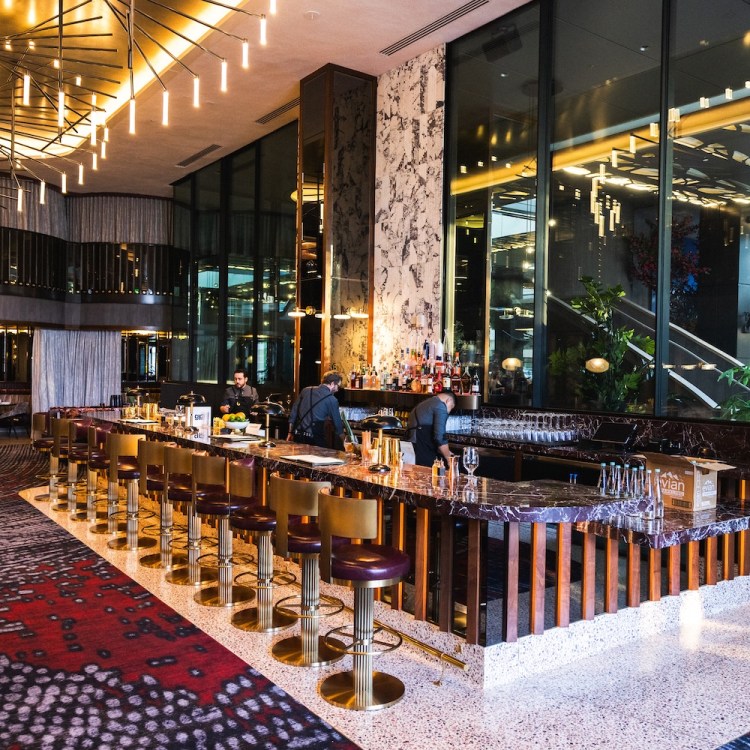Occasionally, when driving down a street in Los Angeles, you’ll pass a series of large white trailers signifying a key part of the regional economy: film production. On many of these shoots, after the director calls for quiet on the set, a person carrying 45 pounds of sound equipment will inevitably yell, “Leaf blower!”
“It’s almost a running joke,” says Ryan Canestro, a soundman. “You say, ‘roll sound,’ and they fire up.”
It may seem inconsequential, but consider that there can’t be any unscripted noise, since editors require multiple takes of every shot for coverage.
“If we’re already 20 minutes behind, they need to get that thing knocked out as quickly as possible to stay on schedule,” Canestro says. “Once you start getting into overtime and you have a whole crew that’s now making time and half, which wasn’t budgeted at all, that gets really expensive really quick.”
Cue the assistant director, who runs out offering the landscaper $20 to stop, an occurrence so common that multiple showbiz sources have joked about landscaping crews who drive around looking for productions to fleece.
Such mythologies are baked into the L.A. cultural landscape, like restaurants with salads that induce labor in late-term pregnancies. But the pandemic has given rise to more outcries against leaf blowers, and not just in California. Editorials lamenting all the noise, noise, noise, noise have run in the New York Times and the Wall Street Journal.
Eight California municipalities have ordinances against them, and now the state has taken aim with Assembly Bill (AB) 1346, which effectively bans the sale of gas-powered small off-road engines (SOREs) by January 1, 2024. But this bill is not aimed at noise. It’s aimed at air pollution.
Despite having some of the most stringent pollution controls in the country, California still fails to meet the standards of the Clean Air Act (CAA), a federal law that requires states to meet certain criteria. Governor Gavin Newsom wants to go further: AB 1346 aims to meet his executive order N-79-20, calling for California to be a zero-emission state by 2045.
The California Air Resources Board (CARB) ran tests that found that leaf blowers discharge the same amount of pollution in an hour as driving a 2017 Camry from L.A. to Denver. What’s worse, they pollute when powered off via evaporation. “If it’s outside in the sun, it’s heating up,” says Don Anair, climate scientist at the Union of Concerned Scientists. “Even if it’s being stored in an area that gets warm, that creates additional gases that are evaporating from the gasoline, and that’s a significant contributor to smog formation.”
Globally, breathing polluted air is linked to more than three million premature deaths per year. It increases risk of cardiovascular disease, asthma, lung cancer, depression and anxiety. Air pollution impacts everyone, and some of its most acute victims are the people who actually wield SOREs on a daily basis. According to the US Department of Labor and Statistics, there are 120,740 landscaping professionals in California, the majority of whom are minorities. Accounting for undocumented workers likely pushes that number higher.

CARB, the Union of Concerned Scientists and the Lung Association all say that minorities in general take the brunt of pollution. The location of freeways, landfills, commutes for work, and geographic location all disproportionately impact communities of color.
Like cars and smokestacks, SOREs emit volatile organic compounds — namely, particulate matter 2.5 and 1,3-Butadiene — for which there is no safe exposure level. Academic studies abound on the linkages between pollution and adverse health because teasing out these effects is complicated and getting worse by the day. To wit, there’s an ongoing study at Harvard University illustrating how one cubic millimeter rise of PM 2.5 corresponds to an 8% rise in COVID-19 deaths, and a “small exposure to PM 2.5 leads to large increase in the COVID-19 death rate.”
Linking pollution to socioeconomics is tricky, and linking pollution to a deadly pandemic trickier still. When someone dies from COVID, it’s difficult to account for all the present comorbidities: Was it diabetes, obesity, lack of access to good medical care? Or was it years of exposure to air pollution?
“All these conditions are extremely difficult to isolate from each other,” says Maria Cecilia Pinto de Moura, Senior Vehicles Engineer at the Union of Concerned Scientists. “The Harvard study just looked at the health impacts from PM 2.5, and they try to remove causality from all other conditions.”
Her own studies looked at the entire Medicaid population, which shows a “significant increase in the risk of death associated with short-term exposure to PM 2.5 and ozone.” Harvard has the funding to take this a step further, and isolate based on socioeconomic factors. This sort of intersectional analysis allows researchers to overlap and parse different layers of data. “African Americans are particularly vulnerable in general to PM 2.5 and it’s not clear whether it’s because there’s more diabetes among African Americans or it’s because of where they live.”
If the complexity of research presents a challenge, consider its place in the narrative arc of history. When President Nixon signed the CAA into law in 1970, there had already been nearly 30 years of federally funded research into its effects — a lengthy process, since the technology to assess research was expensive and inchoate. Early federal legislation started after an instance in Donora, Pennsylvania, in 1948 in which 40 people died from “one of the worst air pollution disaster’s in the nation’s history,” according to The New York Times. This was back when America was great, the research well-funded and its advocates bipartisan. Before concern reached the federal level, states were already regulating air pollution, starting with Oregon in 1952. And before that, municipalities regulated the air, with the first ordinance in Chicago in 1881. At the time there was no data on the health risks. Pollution was just seen as a nuisance, an eyesore — not so different than the earsore it is in present-day Los Angeles.
“We know that there’s a rise in noise concerns,” says Andrew Bray of the National Association of Landscaping Professionals, which opposed the Bill, but not for the typical reasons. “When we opposed it, we weren’t trying to kill it. We were trying to make it better,” says Bray. “Climate change is something we take seriously.”
Bray says he just wants something that won’t hurt businesses, most of which are small, minority-owned shops. There are 16.7 million SOREs ($2.6 billion worth) in use, and the state’s $30 million rebate program, which is financed through its cap-and-trade program, could fall short, especially for businesses which only account for 15% of the market. Seventy-seven percent of the market is residential. The rest is governmental usage.
Consider also that AB 1346 just bans the sale of SOREs in California, not their use. What’s to stop someone from going to Nevada for one? Assemblyman Berman’s office, which championed the bill, hasn’t responded to that question. Sources around Sacramento suggest that the bill, which had been in the works for years, gained momentum this year because the pandemic has everyone working from home and more sensitive to the leonine roar of the engines.
“No one wants to admit that they’re just being annoyed and this why they’re doing it,” says Dan Mabe, of AGZA, an eco-friendly landscaping and consulting business. “From the perspective of the worker, we coined the term ‘outdoor sweatshops,’” says Mabe, noting that if you can smell it, you’re exposed to it. AGZA advised Berman’s office and CARB on the bill, and stands to benefit as an early mover in the field, despite staying neutral on its passage.

Mabe founded AGZA in the mid-2000s to ease his own exposure to air and noise pollution. He started making his own equipment with aerospace engineers. Of the roughly 16.7 million gas-powered SOREs in use, 12.9 are residential. However, 18.4 million residential users have already switched to Zero-Emission Equipment (ZEE), and there are now 25 brands in the residential ZEE space. Commercial landscapers have yet to switch over because ZEE technology is more expensive, plus there are only eight commercial brands to choose from. Bray is quick to point out that ZEEs tend to be less powerful, and cites concerns over charging, especially in a state known for rolling blackouts.
Mabe counters this, noting that while ZEEs are more expensive, the power is there, pointing to a Florida client, Suntech, that uses solar-powered devices on 95% of its business. “If you spec out the workload that gas is doing, and we inventory that, and then spec out a battery bank that’s adequate to handle that given workload, the battery bank becomes the gas cans of operation,” Mabe says. “Instead of refueling an internal combustion piece of equipment, you’re basically swapping a battery.”
Mabe adds that further reductions are achievable for native landscapes, which reduce SORE use because they can be managed by people-powered devices such as brooms and rakes. “Our motto is grow food, not grass,” says Mabe. “When you reduce your turf by at least 30%, put in natives and have more water-wise landscaping, I can tell you, unequivocally, it will be serviced with people-powered and [ZEEs] so much easier.”
Recently your correspondent spoke to Miguel*, a landscaper who was working on a particularly hot November day in LA. Miguel has been doing this for 20 years and covers eight to 10 houses a day.
He’s familiar with AB 1346, and when speaking about the rebate program, he nods, saying he intends to wait and see how AB 1346 is implemented. The company he works for already has a few ZEEs, which brings a smile to his face.
When asked about whether he’s concerned about the health impacts of using a gas-powered leaf blower, he frowns as though the question is silly, glances back at his co-worker, who’s blowing dust and debris down a driveway, and says, “No. No. No.”
So why does he want to switch to electric?
“It’s less noisy and more fast.”
* Name changed for anonymity
This article was featured in the InsideHook LA newsletter. Sign up now for more from the Southland.
























